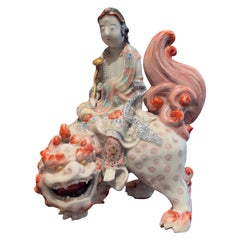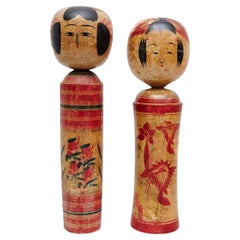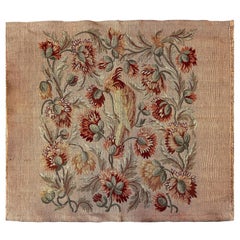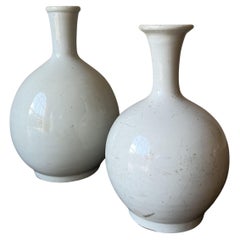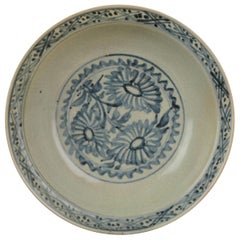Continental Europe - Asian Art and Furniture
Late 19th Century Japanese Meiji Antique Continental Europe - Asian Art and Furniture
Porcelain
Early 20th Century Japanese Edo Continental Europe - Asian Art and Furniture
Wood
1970s French Art Deco Vintage Continental Europe - Asian Art and Furniture
Wool
Late 18th Century Korean Antique Continental Europe - Asian Art and Furniture
Ceramic
17th Century Chinese Ming Antique Continental Europe - Asian Art and Furniture
Porcelain
20th Century Continental Europe - Asian Art and Furniture
Brass
1960s Japanese Showa Vintage Continental Europe - Asian Art and Furniture
Tin
1960s Japanese Japonisme Vintage Continental Europe - Asian Art and Furniture
Silk
19th Century Chinese Han Antique Continental Europe - Asian Art and Furniture
Earthenware
Late 19th Century Qing Antique Continental Europe - Asian Art and Furniture
Multi-gemstone
15th Century and Earlier Israeli Antique Continental Europe - Asian Art and Furniture
Sandstone
15th Century and Earlier Chinese Han Antique Continental Europe - Asian Art and Furniture
Terracotta
19th Century French Chinoiserie Antique Continental Europe - Asian Art and Furniture
Fabric
1970s Japanese Japonisme Vintage Continental Europe - Asian Art and Furniture
Gold Leaf
18th Century Chinese Louis XV Antique Continental Europe - Asian Art and Furniture
Bronze
Late 20th Century Japanese Showa Continental Europe - Asian Art and Furniture
Cotton
Early 20th Century Chinese Continental Europe - Asian Art and Furniture
Bronze
16th Century Indian Antique Continental Europe - Asian Art and Furniture
Wood
Late 20th Century Japanese Showa Continental Europe - Asian Art and Furniture
Silk
Late 18th Century Chinese Qing Antique Continental Europe - Asian Art and Furniture
Copper, Enamel
19th Century Japanese Meiji Antique Continental Europe - Asian Art and Furniture
Porcelain
Early 20th Century Indian Continental Europe - Asian Art and Furniture
Paper
Late 19th Century Turkish Islamic Antique Continental Europe - Asian Art and Furniture
Silver
19th Century Japanese Antique Continental Europe - Asian Art and Furniture
Paper
17th Century Japanese Edo Antique Continental Europe - Asian Art and Furniture
Copper, Gold
1990s Japanese Showa Continental Europe - Asian Art and Furniture
Clay
1960s French Mid-Century Modern Vintage Continental Europe - Asian Art and Furniture
Wood
17th Century Chinese Ming Antique Continental Europe - Asian Art and Furniture
Porcelain
19th Century Meiji Antique Continental Europe - Asian Art and Furniture
Metal
Early 19th Century Chinese Qing Antique Continental Europe - Asian Art and Furniture
Elm
1930s Chinese Tibetan Vintage Continental Europe - Asian Art and Furniture
Wool
Late 17th Century Burmese Antique Continental Europe - Asian Art and Furniture
Bronze
18th Century Sri Lankan Dutch Colonial Antique Continental Europe - Asian Art and Furniture
Silver
Early 18th Century Chinese Qing Antique Continental Europe - Asian Art and Furniture
Porcelain
19th Century Thai Antique Continental Europe - Asian Art and Furniture
Bronze
1920s Chinese Vintage Continental Europe - Asian Art and Furniture
Silver
Mid-19th Century Chinese Qing Antique Continental Europe - Asian Art and Furniture
Elm
18th Century Indian Antique Continental Europe - Asian Art and Furniture
Wood
2010s French Modern Continental Europe - Asian Art and Furniture
Tortoise Shell, Wood, Paint
15th Century and Earlier Chinese Archaistic Antique Continental Europe - Asian Art and Furniture
Bronze
17th Century Chinese Ming Antique Continental Europe - Asian Art and Furniture
Porcelain
17th Century Chinese Ming Antique Continental Europe - Asian Art and Furniture
Porcelain
Early 20th Century Japanese Edo Continental Europe - Asian Art and Furniture
Wood
Late 20th Century Japanese Showa Continental Europe - Asian Art and Furniture
Silk
Mid-20th Century Japanese Showa Continental Europe - Asian Art and Furniture
Silk
17th Century Chinese Ming Antique Continental Europe - Asian Art and Furniture
Porcelain
Late 20th Century Japanese Showa Continental Europe - Asian Art and Furniture
Silk
16th Century Indian Antique Continental Europe - Asian Art and Furniture
Silver
1980s Japanese Showa Vintage Continental Europe - Asian Art and Furniture
Silk
Mid-18th Century Chinese Chinese Export Antique Continental Europe - Asian Art and Furniture
Porcelain
1850s Turkmen Tribal Antique Continental Europe - Asian Art and Furniture
Metallic Thread
Late 19th Century Japanese Japonisme Antique Continental Europe - Asian Art and Furniture
Gold Leaf
21st Century and Contemporary Continental Europe - Asian Art and Furniture
Bronze
Late 19th Century Japanese Meiji Antique Continental Europe - Asian Art and Furniture
Bronze
17th Century Chinese Ming Antique Continental Europe - Asian Art and Furniture
Porcelain
Mid-20th Century Nepalese Continental Europe - Asian Art and Furniture
Bronze
19th Century Indian Other Antique Continental Europe - Asian Art and Furniture
Cotton
19th Century Japanese Antique Continental Europe - Asian Art and Furniture
Giltwood, Lacquer
21st Century and Contemporary Italian Modern Continental Europe - Asian Art and Furniture
Blown Glass
19th Century Japanese Meiji Antique Continental Europe - Asian Art and Furniture
Earthenware
Read More
Symbols of Happiness and Rebirth Adorn This Japanese Satsuma Bowl
Decorated with white cranes and the sought-after thousand-butterflies motif, the Meiji-period vessel offers both a celebration of traditional aesthetics and a clear reflection of the era’s appetite for exquisite export pieces.
Chicago’s Pagoda Red Has a Spirited Mix of Asian Antiques and Bold New Art
For 25 years, gallerist Betsy Nathan has leveraged her keen eye and key connections to bring a unique selection of rare finds to the market.
In L.A., Gallerist JF Chen Has Long Championed Eclectic Blue-Chip Design
Now working alongside his daughter Bianca, dealer Joel Chen has presented a most covetable array of antiques, art and contemporary creations for more than 40 years.
12 Calming Spaces Inspired by Japanese Design
From cherry-blossom-adorned walls paired with glamorous lighting to wood-paneled ceilings above checkerboard-patterned chairs, these 12 spaces seamlessly blend Eastern and Western aesthetics.
Rodrigo Rivero Lake’s Mexico City Showroom Is a Museum-Worthy Trove of Spanish Colonial and Asian Antiques
The dealer and curator has spent the past 50 years amassing a collection of exceptional art, furniture and architectural elements that trace the cultural influence of the Spanish empire from Europe to the Americas and beyond.
16 Refined Asian-Inspired Interiors
These spaces exemplify how Eastern elements elevate a home's decor.
